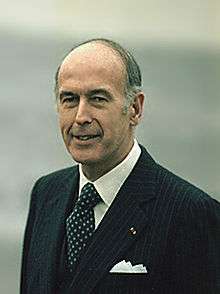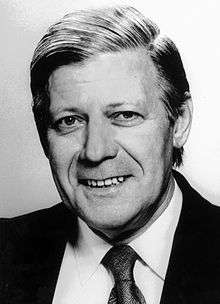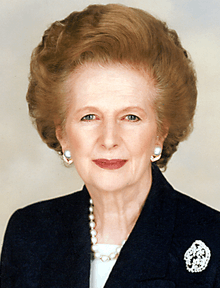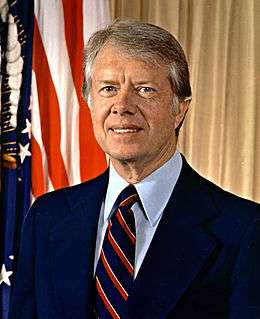6th G7 summit
| 6th G7 summit | |
|---|---|
.jpg) San Giorgio Maggiore in Venice | |
| Host country | Italy |
| Dates | June 22–23, 1980 |
| Follows | 5th G7 summit |
| Precedes | 7th G7 summit |
The 6th G7 Summit was held at Venice, Italy between June 22 and 23rd, 1980. The venue for the summit meetings was the island of San Giorgio Maggiore in the Venetian lagoon.[1]
The Group of Seven (G7) was an unofficial forum which brought together the heads of the richest industrialized countries: France, West Germany, Italy, Japan, the United Kingdom, the United States, Canada (since 1976)[2] and the President of the European Commission (starting officially in 1981).[3] The summits were not meant to be linked formally with wider international institutions; and in fact, a mild rebellion against the stiff formality of other international meetings was a part of the genesis of cooperation between France's President Giscard d'Estaing and West Germany's Chancellor Helmut Schmidt as they conceived the first Group of Six (G6) summit in 1975.[4]
Leaders at the summit
The G7 is an unofficial annual forum for the leaders of Canada, the European Commission, France, West Germany, Italy, Japan, the United Kingdom and the United States.[3] Japanese Prime Minister Masayoshi Ōhira suffered a fatal heart attack on June 12, only days before the summit; and his colleague, Foreign Minister Saburō Ōkita, led the delegation which represented Japan in his place. Others joining Ōkita in Venice were Finance Minister Noboru Takeshita and the Minister of International Trade and Industry Yoshitake Sasaki who attended the foreign minister's meeting in Ōkita's place.[5]
The 6th G7 summit was the last summit for French President Valéry Giscard d'Estaing and U.S. President Jimmy Carter. It was also the first and only summit for Italian Prime Minister Francesco Cossiga.
Core G7 participants
These summit participants are the current "core members" of the international forum:[6]
| Core G7 members Host nation and leader are indicated in bold text. | |||
| Member | Represented by | Title | |
|---|---|---|---|
| |
Canada | Pierre Trudeau [1] | Prime Minister |
| |
France | Valéry Giscard d'Estaing [1] | President |
| |
West Germany | Helmut Schmidt [1] | Chancellor |
| |
Italy | Francesco Cossiga [1] | Prime Minister |
| |
Japan | Saburō Ōkita [1] | Minister for Foreign Affairs |
| |
United Kingdom | Margaret Thatcher [1] | Prime Minister |
| |
United States | Jimmy Carter [1] | President |
| |
European Commission | Roy Jenkins [7] | President |
Issues
The summit was intended as a venue for resolving differences among its members. As a practical matter, the summit was also conceived as an opportunity for its members to give each other mutual encouragement in the face of difficult economic decisions.[4]
Gallery
-

 Japan
Japan
Saburo Okita, Minister for Foreign Affairs
See also
Notes
- 1 2 3 4 5 6 7 8 Japan, Ministry of Foreign Affairs (MOFA): Summit Meetings in the Past.
- ↑ Saunders, Doug. "Weight of the world too heavy for G8 shoulders," Globe and Mail (Toronto). July 5, 2008 -- n.b., the G7 becomes the Group of Eight (G7) with the inclusion of Russia starting in 1997.
- 1 2 Reuters: "Factbox: The Group of Eight: what is it?", July 3, 2008.
- 1 2 Reinalda, Bob and Bertjan Verbeek. (1998). Autonomous Policy Making by International Organizations, p. 205.
- ↑ Stokes, Henry Scott. "Japan's Prime Minister Ohira Dies At 70 as a Critical Election Nears; Japan's Prime Minister Dies at 70 After Heart Attack Plans for Venice Meeting," New York Times. June 12, 1980.
- ↑ Rieffel, Lex. "Regional Voices in Global Governance: Looking to 2010 (Part IV)," Archived June 3, 2010, at the Wayback Machine. Brookings. March 27, 2009; "core" members (Muskoka 2010 G-8, official site). Archived June 3, 2010, at the Wayback Machine.
- ↑ MOFA: Summit (8); European Union: "EU and the G8" Archived February 26, 2007, at the Wayback Machine.
References
- Bayne, Nicholas and Robert D. Putnam. (2000). Hanging in There: The G7 and G8 Summit in Maturity and Renewal. Aldershot, Hampshire, England: Ashgate Publishing. ISBN 978-0-7546-1185-1; OCLC 43186692
- Reinalda, Bob and Bertjan Verbeek. (1998). Autonomous Policy Making by International Organizations. London: Routledge. ISBN 978-0-415-16486-3; ISBN 978-0-203-45085-7; OCLC 39013643
External links
- No official website is created for any G7 summit prior to 1995 -- see the 21st G7 summit.
- University of Toronto: G8 Research Group, G8 Information Centre
.jpg)





